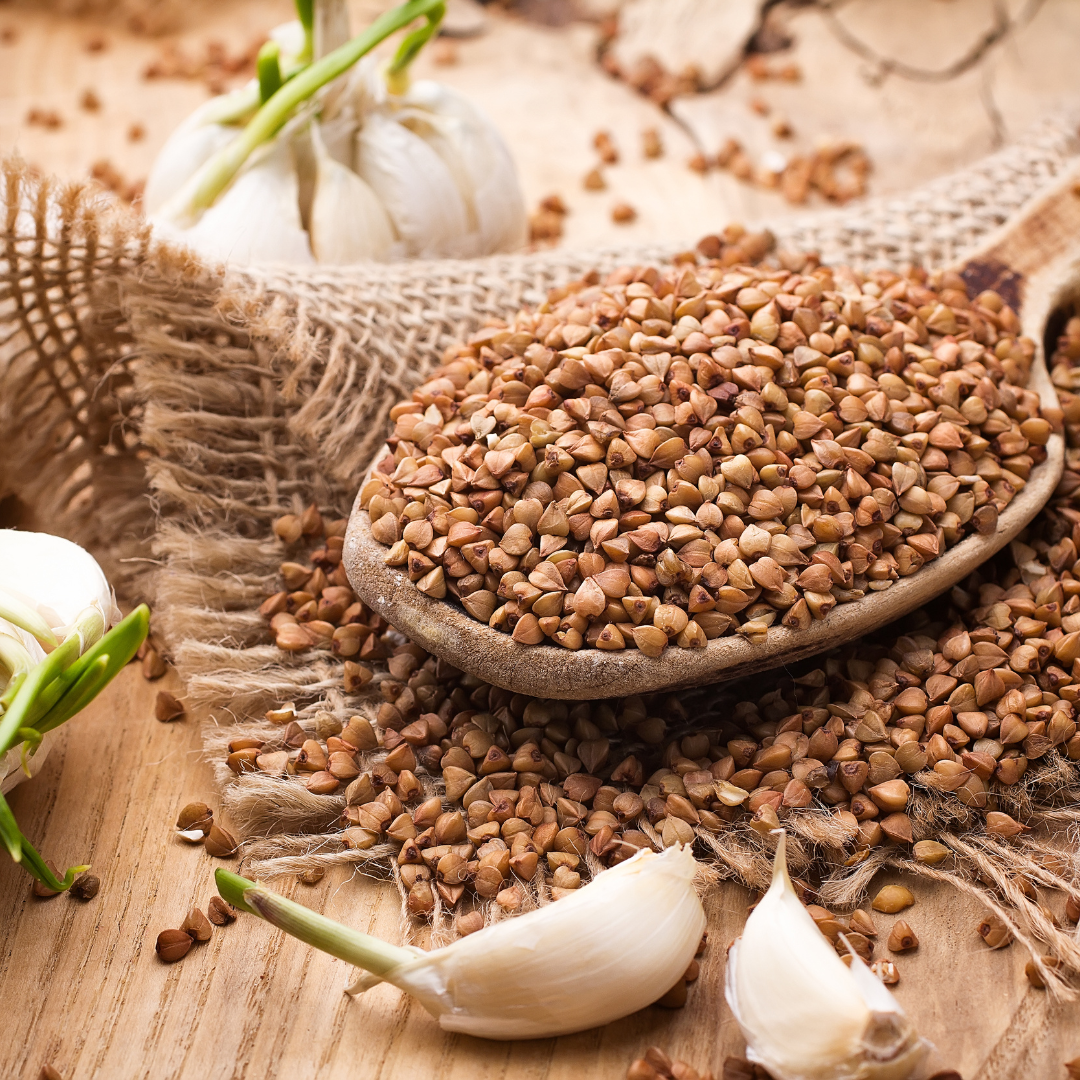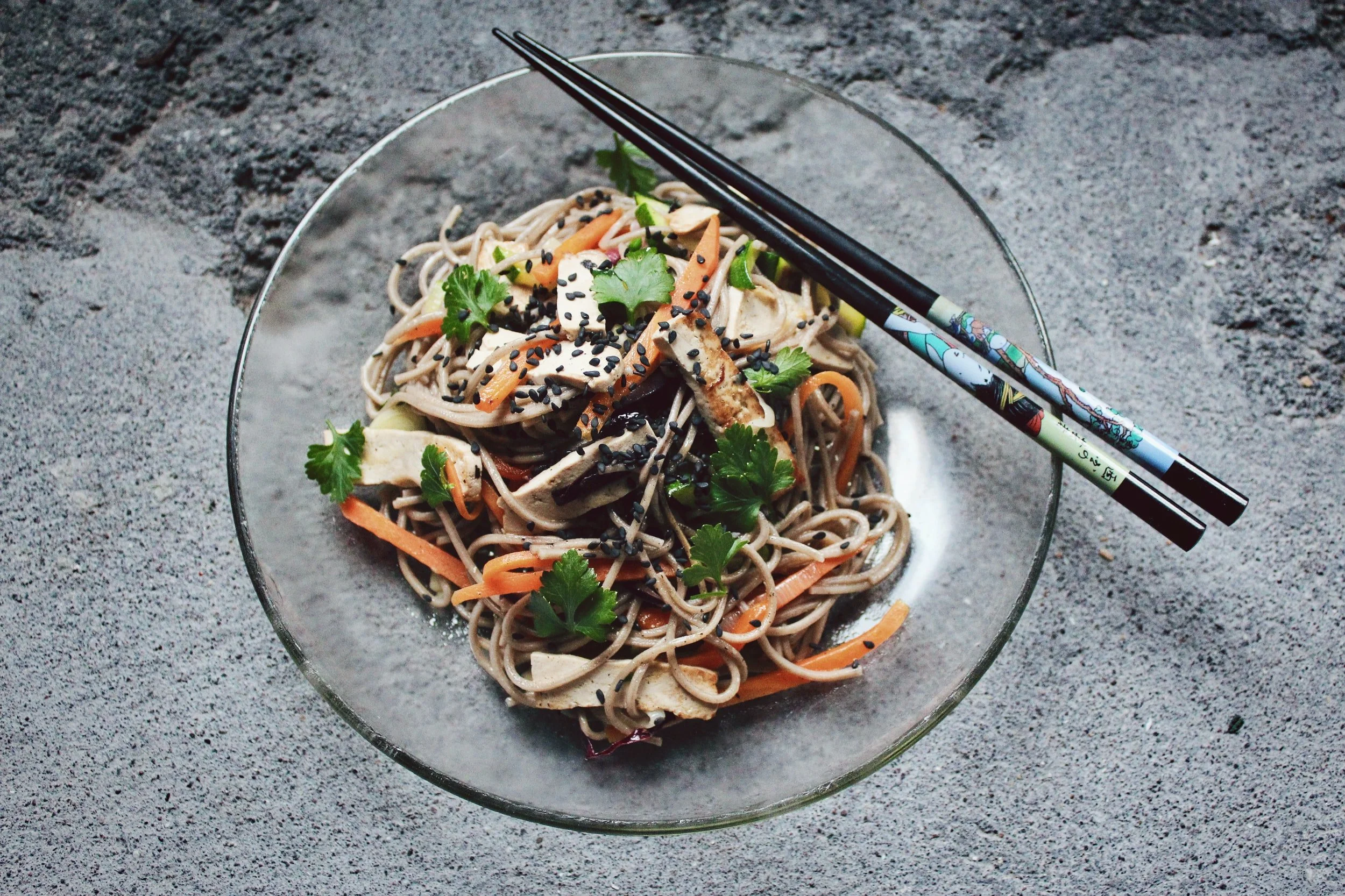A Guide to Buckwheat and its uses in Allergy Free Cookery
What Is Buckwheat, and how can I use it in cooking?
Discover some fantastic ways to incorporate buckwheat into allergy-free cooking. Buckwheat flour is one of my favourite ingredients to cook with. It's naturally gluten-free, packed with nutrients, and is currently very trendy.
I want to share with you how versatile buckwheat is as an ingredient. My sister bought buckwheat flour for one of my recipes but needed some guidance on how else to use it for more than my hob nob biscuit recipe.
Often with free-from and allergy cooking, you end up with a pantry full of various ingredients that you may only use once.
This article aims to offer more ways to use buckwheat and provide insight into this superfood ingredient for those new to this ancient grain.
In this article, I will cover:
What is buckwheat?
What are the different forms of buckwheat?
What is buckwheat flour, and how to use it in cooking
Can I use buckwheat flour instead of plain flour?
Baking and cooking with Buckwheat flour
Recipes
What is kasha?
How to cook and use buckwheat groats
What are Buckwheat noodles & pasta
What are Buckwheat flakes
What are the nutritional benefits of Buckwheat?
What are the health benefits of eating Buckwheat?
Allergy profile of buckwheat
Where can I buy Buckwheat from?
Storage and use by dates on buckwheat
So what exactly is Buckwheat?
Buckwheat is a seed that does not contain wheat or gluten. Yes, I know the name is rather confusing. The name "buckwheat" or "beech wheat" comes from its triangular seeds, which resemble the much larger seeds of the beech nut from the beech tree and the fact that it is used like wheat.
While buckwheat is often thought of as a cereal grain, it is actually a fruit seed related to rhubarb and sorrel. Its high protein content offers great structure as well as nutrition.
Buckwheat belongs to a group of foods commonly called pseudocereals. Which are seeds consumed as cereal grains but don't grow on grasses. ( like wheat, maize, rice, barley and oats.)
Other common pseudocereals include quinoa and amaranth. Buckwheat and buckwheat flour is therefore safe for anyone on a strict gluten-free diet.
Buckwheat is mainly harvested in the northern hemisphere, especially in Russia, Kazakhstan, China, and Central and Eastern Europe.
Buckwheat is an ancient grain. Common Buckwheat was domesticated and first cultivated in inland Southeast Asia, possibly around 6000 BCE, and from there spread to Central Asia and Tibet, and then to the Middle East and Europe.
It has been eaten in Asian and Eastern European countries for centuries but is now becoming increasingly popular in the west due to its many health benefits.
In India, buckwheat flour is known as kuttu ka atta and has long been culturally associated with many festivals like Shivratri, Navaratri and Janmashtami. On the day of these festivals, food items made only from buckwheat are consumed, like special breads.
The Europeans use it to make pancakes, crepes and breads. Koreans and the Japanese also make soba noodles. In Russian they make little pancakes called blinis, often topped with crème fraîche and smoked salmon.
What are the different forms of buckwheat?
Buckwheat comes in many forms, buckwheat groats, flakes, flour, and kasha.
While it is not a true grain, it can be used like one in cooking and is a delicious alternative to couscous, bulgur wheat, rice and pasta.
You can buy buckwheat as groats which are the seeds, or as flour which is milled as kasha which is roasted buckwheat, buckwheat flakes that can be used to make porridge or as ready-made products like noodles, pasta etc.
What is buckwheat flour, and how can I use it in cooking?
Buckwheat flour is a tasty and beautifully delicate flour. It's a nutritious whole grain gluten-free flour with a robust, nutty and earthy flavour and makes an excellent alternative to plain wheat flour in making breads, cakes, muffins and pancakes. I love the depth of flavour buckwheat flour has in the recipes I create.
It is one of the better-known alternative flours because it has been used in traditional recipes worldwide. Buckwheat flour can be light or dark. Light buckwheat flour is made by grinding hulled kernels.
On the other hand, dark buckwheat flour is made from whole buckwheat groats with the hulls. This flour has dark specs and is higher in fibre than the light variety.
Can I use buckwheat flour instead of plain flour?
Buckwheat flour cannot mimic gluten's properties, so it should not be used in a 1:1 swap with wheat flour. Buckwheat doesn't rise, which is why it is so well suited to pancakes, biscuits or pastry.
Buckwheat flour can be hard to work with. It is not as robust as plain flour, as it lacks the gluten to strengthen it. However, if you require your recipe to be gluten-free, you can use buckwheat flour solely in recipes, or you can add a starchy flour like tapioca starch or arrowroot powder to make it easier to work with.
Baking and cooking with Buckwheat flour
If you are using buckwheat flour in a cake, the results may be a little heavy and dense or crumbly since it doesn't have the binding properties of gluten.
I would recommend that no more than 50% buckwheat flour might be used in the total flour percentage.
Using it in combination with starchy flour such as sweet rice flour or tapioca flour, or even a nut flour like almond flour, you can produce beautiful light, fluffy bakes with a good structure.
What is kasha?
Kasha is basically toasted buckwheat, and it has become increasingly popular in recent years. It can be made simply by dry roasting buckwheat in a frying pan until golden, or you can buy it pre-roasted.
It has a crunchy and nutty texture and is so fantastic to top salads ( instead of using croutons), and as a topping for yoghurt and porridge.
I also use kasha to put in raw chocolate see below and tap picture for recipe.
How to cook and use buckwheat groats – They take 5-10 minutes to cook. Just pop in boiling water. Boiled/steamed buckwheat can taste like little spongy balls, like giant cous cous but needs to be cooked a little al dente; otherwise, it will taste mushy. It's a great substitute for rice.
I find that it's gentler on my stomach but still really filling. It's a delicious alternative to couscous, bulgur wheat, rice and pasta. Use it in place of other grains for chilli con Carne, risottos, Curries, in salads.
Here's an article that explains how to cook it in much more detail.
Buckwheat noodles & pasta
King soba noodles are literally all I use. They only take a few minutes to cook but are incredibly delicious and hold together well. In fact, they really do just taste like regular noodles. I would highly recommend them.
Don't use this brand. of pasta It's by far the worst I've used. It just turns to gloopy mush. I mean, why bother to go to such great lengths to produce something that turns into slop?? Needless to say, I flung it in the bin where it belongs.
This is my favourite brand of buckwheat pasta. In fact, anything from Dove's farm I love as the quality is excellent. You can buy doves pasta in supermarkets and most health food shops.
I also love this brand made by Sainsbury's. With both these pasta, I love how well they hold together. They don't go mushy or break up and taste like regular pasta. I will undercook the pasta if you use it in a bake as it will definitely turn to mush. Both pastas take less than 5-7 minutes to cook.
Buckwheat flakes
The flaked form is basically a rolled-out variation of the grain. This is not to be confused with buckwheat flakes, which are manufactured flakes made from buckwheat flour that look a little like Special K ( which I would not recommend because who needs to eat processed chemically-laden foods.)
I tried making porridge from Buckwheat many moons ago, and it turned into what only resembled wallpaper paste. It was awful..
Needless to say, that's the only time I've cooked it. However, next time I might add other ingredients for texture, like nuts, seeds, fruit, and bee pollen and top with yoghurt.
What are the nutritional benefits of Buckwheat?
Buckwheat is mainly composed of carbs. It also boasts a good amount of fibre and resistant starch, which may improve colon health.
It also contains a high level of protein. buckwheat has the reputation of being a 'superfood'. It's a great source of protein and fibre while also extremely low in fat. It is also a low GI (glycaemic index), slow-release energy… A good option for people with Type 2 Diabetes.
Buckwheat is richer in minerals than many other pseudocereals and cereals. It's high in manganese, copper, and magnesium but low in most other vitamins.
Buckwheat's nutritional value is considerably higher than that of many other grains. The nutrition facts for 3.5 ounces (100 grams) of raw Buckwheat are
Calories: 343
Water: 10%
Protein: 13.3 grams
Carbs: 71.5 grams
Sugar: 0 grams
Fibre: 10 grams
Fat: 3.4 grams
What are the health benefits of eating Buckwheat?
Buckwheat may moderate blood sugar levels, making it a healthy choice for people with type 2 diabetes. What's more, it may boost heart health by improving blood pressure and your blood lipid profile. It is also said to contain disease-fighting antioxidants and can help lower cholesterol and blood pressure.
Buckwheat is naturally free from all major allergens
Although a small minority of people cannot tolerate buckwheat, it otherwise remains entirely 'free from' (barring usual cross-contamination checks). That and its nutritional profile make it an excellent addition to many nutritionally limiting diets.
Gluten-Free
Dairy-Free
Egg Free
Vegan
Soy Free
Nut Free
Sesame Free
Sulphites and other key allergens
Where can I buy Buckwheat from?
You find all forms In your supermarket and health food stores. I buy buckwheat flour, noodles, and pasta in the supermarket. However, health food stores are more likely to sell buckwheat flakes. I've never seen them in the supermarkets.
How long does buckwheat last and how do I store it?
Once cooked, Buckwheat can be kept in the fridge for 3-4 days in an airtight container or covered in clingfilm. That makes it perfect for cooking up in larger batches, so it's there for nutritious and filling lunch-time salads and bowls.
Alternatively, the cooked groats can also be frozen. Simply pop it in an airtight container in the freezer for up to 3 months. Or freeze in portions if eating for one. However, the groats take minutes, so I recommend cooking them as needed.
I hope that I have inspired you to use Buckwheat and that you have learned a little more about this superfood. I would highly recommend that you experiment. Buckwheat is so cheap to buy. You literally have no excuses!
References & further resources
https://www.easypeasyfoodie.com/what-is-buckwheat-and-how-do-you-cook-it/
https://everydayglutenfreegourmet.ca/2018/03/30/how-to-use-buckwheat-flour/
https://www.bbcgoodfood.com/howto/guide/health-benefits-buckwheat
https://www.glutenfreealchemist.com/buckwheat-what-is-it-how-to-cook-it-nutrition-gluten-free/
You might also like:
Looking for anything?
Browse all Articles
Latest Articles
Latest Recipes
Follow along 0n Instagram



































